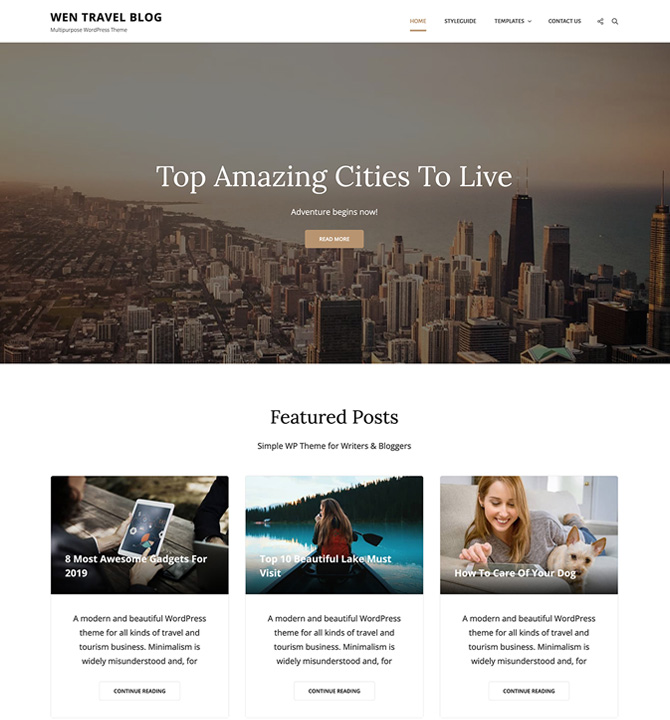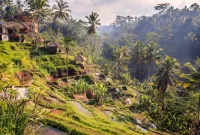How to Design Your Travel Blog Template
Creating a travel blog is an exciting journey. It’s a platform to share your adventures and inspire others.
But how do you design a travel blog that stands out? One that captures the essence of your travels and engages your readers?
This guide will help you navigate the process. From choosing the right platform to customizing your travel blog template, we’ve got you covered.
Let’s dive into the world of travel blogging and create a space that truly reflects your unique travel experiences.
Understanding Travel Blog Templates
A travel blog template is the backbone of your online journal. It dictates the layout and design of your blog.
An effective template attracts readers and enhances their experience on your site. It’s about merging aesthetics with functionality to showcase your travel stories beautifully.
Travel blog templates come in various styles. Some are minimalistic, focusing on content, while others boast vibrant visuals.
Here’s what a good travel blog template should offer:
- Responsive design for various devices
- Easy navigation menus
- Customization options for personal branding
- Support for multimedia content: images, videos, and audio
Choosing the right template starts with identifying your blog’s needs. Consider the type of content you want to share and how you’d like it to be presented.
Templates should reflect your personality as a traveler. They help convey your unique voice and travel style to your audience.
Choosing the Right Platform: Why WordPress?
Selecting the right platform is crucial for the success of your travel blog. WordPress stands out as a top choice for many bloggers.
WordPress offers unmatched flexibility and scalability. Its vast selection of themes and plugins allows for extensive customization to suit any blog’s unique requirements.
The WordPress community is another benefit. With abundant resources and support available, even beginners can quickly get their blogs up and running.
Its user-friendly interface caters to all skill levels, making WordPress accessible. Plus, its SEO-friendly features can boost your blog’s visibility, drawing more readers to your travel tales.
Selecting a WordPress Theme for Your Travel Blog
The theme you choose sets the tone for your travel blog. It impacts both visual appeal and functionality.
When selecting a WordPress theme, consider your blog’s niche. Some themes are designed specifically for travel blogs, offering features like map integration and travel itineraries.
Look for themes that are responsive. A responsive design ensures your blog looks great on any device, enhancing user experience.
Customization options matter. The best themes allow you to tweak colors, fonts, and layout to match your branding.
Here are key considerations when choosing a theme:
- Responsiveness: Works well on all devices.
- Customization options: Easy to tailor to your style.
- SEO-friendliness: Boosts search engine visibility.
- Speed: Faster themes improve user experience.
- Support: Reliable updates and customer support.
Lastly, ensure the theme aligns with your long-term vision. A theme that matches your style enhances consistency across your blog, helping to engage and retain readers.
Essential Design Elements for a Travel Blog
Crafting an inviting travel blog requires attention to specific design elements. These elements define how your audience interacts with and perceives your blog.
Navigation plays a crucial role. Ensure menus are intuitive and easy to navigate, guiding visitors to what they’re searching for.
Typography affects readability. Choose fonts that are clear and complement your travel blog’s theme. Keep the text size readable on all devices.
Color scheme selection can influence mood. Pick colors that resonate with your personal style yet provide visual harmony.
High-quality images are vital for travel blogs. They convey the essence of locations and experiences shared in your stories.
Consider these key design elements:
- Clear Navigation: Easy-to-find menus and links.
- Readable Typography: Fonts and sizes that enhance readability.
- Consistent Color Scheme: Visual appeal and mood-setting.
- Engaging Images: High-resolution photos that captivate the audience.
- Effective Use of Space: Leverages white space for clarity.
Each design choice should contribute to an engaging and cohesive reader experience. Balancing these elements ensures that your blog is not only attractive but also functional, encouraging visitors to explore your travel tales.
Customizing Your WordPress Travel Blog Template
Customizing your WordPress travel blog template allows your blog to stand out uniquely. It’s an opportunity to express your personality and brand.
Start with branding elements. Incorporate your blog logo and a catchy tagline for easy recognition. These will create a strong first impression.
Explore theme customization options. Adjust colors, fonts, and layouts to align with your aesthetic preferences. WordPress themes often offer a range of options.
Customization extends beyond visuals. Configure your widgets to display useful information like recent posts, categories, and social media links.
Plugins can extend functionality further. Add tools like maps for journeys or translation options for international readers.
Consider the following customization tactics:
- Branding Elements: Add logos and taglines that signify your blog’s identity.
- Theme Tweaks: Adjust colors and fonts for visual appeal.
- Widget Configuration: Showcase dynamic content and social links.
- Functional Plugins: Enhance your blog with maps and multilingual capabilities.
Effective customization reflects your travel style and ensures a pleasant user experience. This encourages visitors to return and engage further with your content.
Enhancing User Experience with Plugins and Widgets
Plugins and widgets play a crucial role in improving user engagement on your travel blog. They add functionality that makes your site more interactive and easy to navigate. By choosing the right ones, you can elevate the reader’s experience significantly.
Consider incorporating plugins that enhance site performance and utility. Popular options include social media sharing tools and SEO enhancement plugins. These features help broaden your reach and improve visibility on search engines.
Widgets further enrich your blog’s interface. Integrate widgets for displaying weather updates or upcoming travel events. Customized widgets make it easier for readers to find the content they are interested in.
Here are some useful additions:
- Social Sharing Plugins: Allow readers to share your adventures.
- SEO Tools: Optimize your content for better search visibility.
- Informative Widgets: Include weather and event information for reader convenience.
Together, plugins and widgets can transform your travel blog into a more dynamic and engaging platform. This keeps visitors interested and encourages them to explore deeper into your travel stories.
Optimizing Your Travel Blog for SEO
SEO optimization is essential for any travel blog aiming to attract a wider audience. It helps your blog rank better in search results, increasing visibility and readership. Implementing effective SEO strategies can turn your blog into a go-to resource for travel enthusiasts.
Start by focusing on keyword usage throughout your content. Use relevant keywords naturally in your titles, headings, and body text. Ensure your travel blog template WordPress is optimized for fast loading speed, as this affects search rankings.
Don’t forget to use meta tags and descriptions. These elements play a vital role in how search engines perceive your content. Compelling meta descriptions encourage more users to click through to your site.
Key SEO optimization steps include:
- Incorporating Keywords: Use them in a natural, reader-friendly manner.
- Fast Loading Speeds: Optimize images and streamline code for quicker loading.
- Meta Tags and Descriptions: Create engaging summaries that improve click-through rates.
With these SEO fundamentals in place, your travel blog can achieve greater reach and influence in the digital world.
Showcasing Your Travel Stories: Content Organization and Presentation
Effectively showcasing your travel stories can significantly boost reader engagement. The way you organize and present content impacts how readers interact with your blog. Prioritizing clarity and visual appeal can keep visitors coming back for more.
Begin by structuring your content in a logical and user-friendly manner. Use headings and subheadings to break up large text blocks, making it easier to digest. Ensure your layout enhances storytelling by drawing attention to key moments and stunning visuals.
Incorporate diverse content types to create a more dynamic and engaging presentation. Use images, videos, and maps to enrich your narratives and provide context. Visitors appreciate varied content, which can keep them exploring your site longer.
Suggestions for dynamic content presentation:
- Use Headings and Subheadings: Improve readability and structure.
- Incorporate Visuals: Enhance stories with images, videos, and maps.
- Mix Content Types: Add variety and depth to your travel blog.
With thoughtful content organization and presentation, you can captivate your audience and give your travel stories the spotlight they deserve.
Conclusion: Launching Your Travel Blog
Now that you’ve designed your travel blog template, it’s time to launch your site. By combining effective design with engaging content and optimized SEO strategies, your travel blog can attract and retain readers.
Remember, maintaining your blog is an ongoing journey. Regular updates and fresh content will keep your audience engaged and eager for more. Embrace the adventure and start sharing your travel tales with the world.
Inspiring Travel Blog Examples to Follow
Looking at travel blog examples can spark creativity and provide design ideas. Observing the styles and formats of successful bloggers can guide your design choices and content strategy.
Here are a few standout travel blogs to explore:
- Nomadic Matt – Known for budget travel tips and engaging storytelling.
- The Blonde Abroad – Offers vibrant visuals and extensive travel guides.
- Expert Vagabond – Features adventure travel stories with stunning photography.
These examples emphasize unique perspectives and effective design, which you can adapt for your travel blog.



